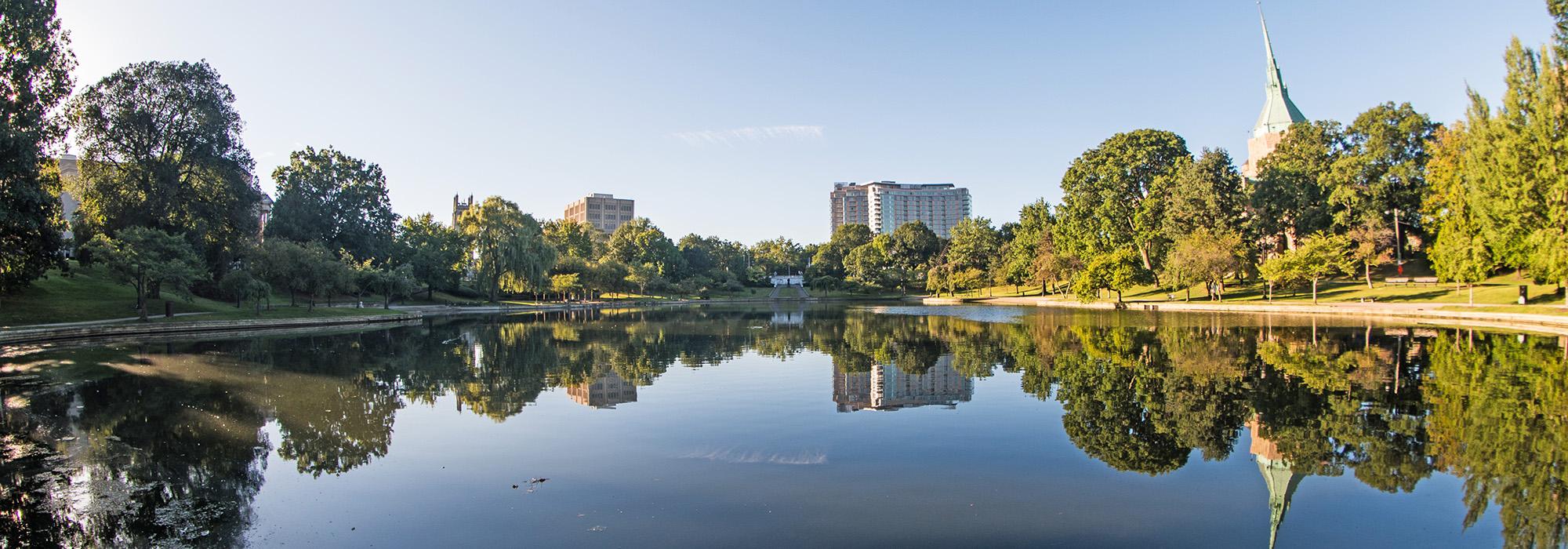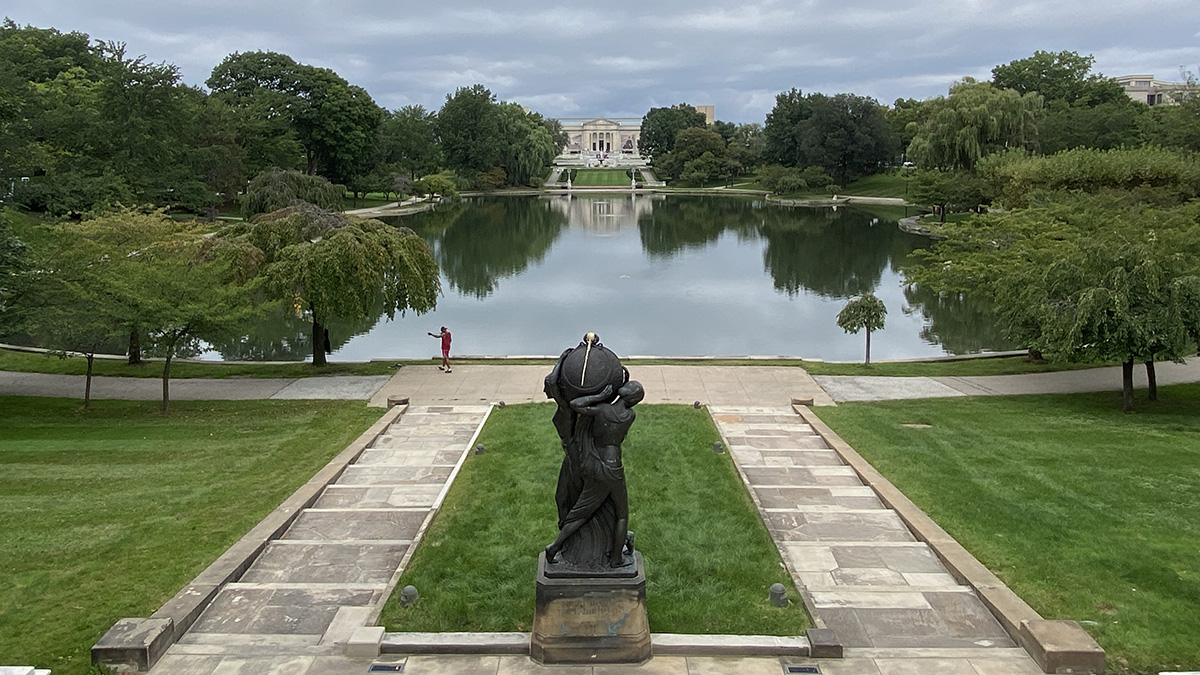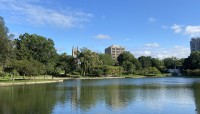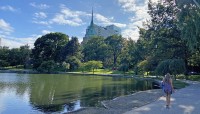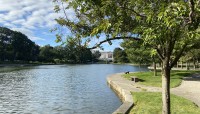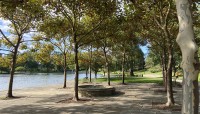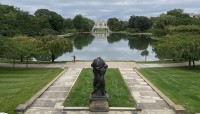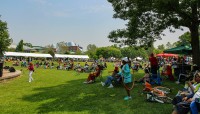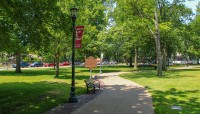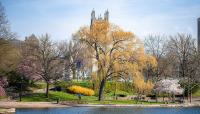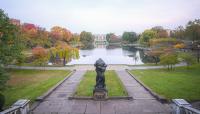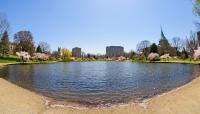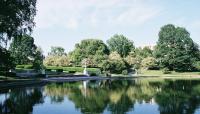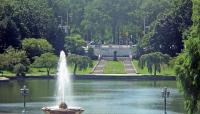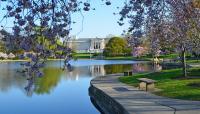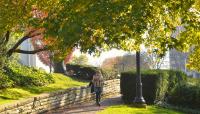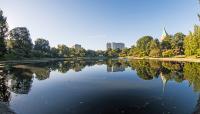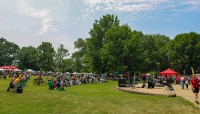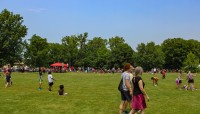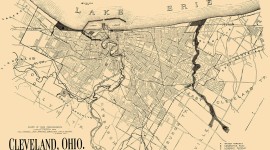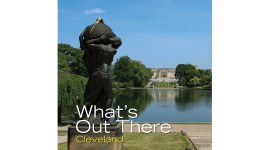Landscape Information
In 1882 industrialist Jeptha Wade donated a 63 acre parcel of land to the city of Cleveland to become a public park and cultural campus. Originally his private estate, Wade had begun developing the natural woodland into a publicly accessible park ten years prior. The park already included a lagoon, used for ice skating in the winter, as well as popular open “pleasure grounds,” though Wade added several stipulations for city-funded improvements to the terms of his deed, including that the center of the property be used for the construction of an art museum. This wish was later fulfilled by his grandson, Jeptha Wade II, who donated another parcel of land for the creation of the Cleveland Museum of Art in 1913.
The Olmsted firm was first contacted by architect Benjamin Hubbell in 1912 and again in 1916 concerning landscape treatment around the museum. Warren Manning had submitted Naturalistic-style designs for Wade Park which were less formal than the Beaux Arts structure required. The museum’s building committee decided not to employ a landscape architect at that time, so the grounds languished. Finally, in 1925 the Garden Club of Cleveland hired Frederick Law Olmsted Jr. of Olmsted Brothers to beautify and integrate the parkland campus, with the city carrying construction expenses. The firm’s design, developed by Olmsted Jr. together with Edward Clark Whiting (whose cousin, Frederic Whiting, was the museum director) and Leon Zach in 1928, included a two-tier formal garden descending from the museum’s southern facade along a central axis into Wade Park. A central grass mall punctuated by topiary and enclosed by side hedges descends a ramped slope which connects at its base with a path around Wade Park Lagoon, located in a hollow. The surrounding descending slopes are a careful modulation of lawn and tree and shrub groupings. On axis with the museum’s entrance, at the southern end of the lake, another step-ramp with central lawn panel ascends the slope to a terrace with a central sculpture by Frank Jirouch, Night Passing the Earth to Day.
Portions of Jeptha Wade’s parcel were also developed into the Wade Park Zoo and Cleveland Botanical Gardens. The Wade Park Historic District was added to the National Register of Historic Places in 1982.



